Splunk vs Tableau
November 12, 2023 | Author: Michael Stromann
55
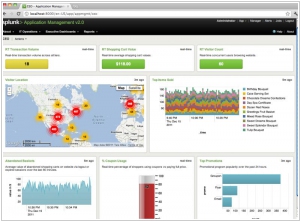
We make machine data accessible, usable and valuable to everyone—no matter where it comes from. You see servers and devices, apps and logs, traffic and clouds. We see data—everywhere. Splunk offers the leading platform for Operational Intelligence. It enables the curious to look closely at what others ignore—machine data—and find what others never see: insights that can help make your company more productive, profitable, competitive and secure.
30

Tableau complements your natural ability to understand data visually. Our breakthrough products let you create rich analyses and share your insights with colleagues in seconds. Connect and visualize your data in minutes. Tableau is 10 to 100x faster than existing solutions. From spreadsheets to databases to Hadoop to cloud services, explore any data with Tableau.
Splunk and Tableau are both powerful tools in the field of data analytics but cater to different aspects of the data pipeline. Splunk is primarily known for its strength in log management and machine data analysis. It allows organizations to collect, index, and analyze large volumes of machine-generated data in real-time. Splunk's focus is on providing operational insights, detecting anomalies, and troubleshooting issues within IT infrastructure and applications.
On the other hand, Tableau specializes in data visualization and business intelligence (BI). It enables users to connect to various data sources, create visually appealing dashboards, and explore data through interactive visualizations. Tableau emphasizes self-service analytics, empowering users to perform ad-hoc analysis and gain insights without extensive technical expertise. It excels in presenting data in a visually compelling and user-friendly manner.
See also: Top 10 Business Intelligence software
On the other hand, Tableau specializes in data visualization and business intelligence (BI). It enables users to connect to various data sources, create visually appealing dashboards, and explore data through interactive visualizations. Tableau emphasizes self-service analytics, empowering users to perform ad-hoc analysis and gain insights without extensive technical expertise. It excels in presenting data in a visually compelling and user-friendly manner.
See also: Top 10 Business Intelligence software
Splunk vs Tableau in our news:
2023. Cisco to acquire IT Monitoring giant Splunk for $28B
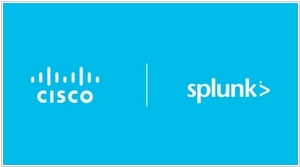
Cisco has announced that it is acquiring Splunk for $28 billion. This acquisition is strategically aligned with Cisco's security-focused business, as it gains access to Splunk's observability platform. This addition will enable Cisco to enhance its ability to assist customers in comprehending security threats while also providing valuable capabilities for analyzing extensive log data to address various challenges such as understanding system failures and troubleshooting a wide range of issues across enterprise systems. It's important to note that both company boards have already given their approval for the acquisition. However, it must undergo regulatory approval, which is not guaranteed due to the heightened scrutiny that such deals are encountering worldwide.
2020. Splunk acquires network observability service Flowmill
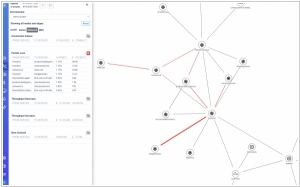
Data platform Splunk continues its acquisition streak as it expands its newly launched observability platform. Following the recent acquisitions of Plumbr and Rigor, the company has now announced the acquisition of Flowmill, a network observability startup based in Palo Alto. Flowmill specializes in helping users identify real-time network performance issues within their cloud infrastructure and offers traffic measurement by service to enable cost control. Similar to other players in this field, Flowmill leverages eBPF, a Linux kernel feature that allows the execution of sandboxed code without the need for kernel modification or loading kernel modules. This capability makes it particularly well-suited for application monitoring.
2020. Splunk acquires Plumbr and Rigor to build out its observability platform
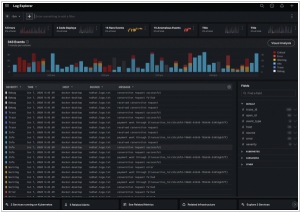
Data platform Splunk has recently made two acquisitions, namely Plumbr and Rigor, in order to enhance its newly launched Observability Suite. Plumbr specializes in application performance monitoring, while Rigor focuses on digital experience monitoring. Through synthetic monitoring and optimization tools, Rigor assists businesses in optimizing their end-user experiences. These acquisitions serve as valuable additions to the technology and expertise gained by Splunk through its acquisition of SignalFx for over $1 billion last year.
2019. Salesforce acquires data visualization company Tableau for $15.7B
Salesforce has made a significant acquisition by purchasing Tableau in an all-stock deal worth $15.7 billion. This strategic move marks Salesforce's expansion beyond CRM software and into the realm of advanced analytics. While Salesforce had previously pursued the acquisition of LinkedIn (which was acquired by Microsoft), the Tableau deal enables Salesforce to enhance its customer engagement and data intelligence capabilities, similar to what LinkedIn could have offered. Additionally, this acquisition positions Salesforce to compete with Google's recent announcement of acquiring Looker, further reinforcing its market presence.
2018. Tableau acquired AI-analytics startup Empirical Systems
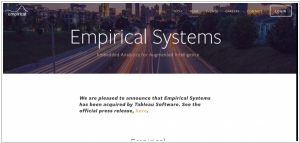
Enterprise BI giant Tableau has made an acquisition of Empirical Systems, a startup in its early stages that specializes in AI. The product offered by Empirical Systems is currently in private Beta and functions as an embedded engine within other applications. This feature seamlessly integrates with the Tableau analytics platform, making it a valuable addition. In addition, Tableau will be able to leverage the expertise of the engineering team from Empirical Systems to enhance its AI capabilities and utilize the advanced technology that underlies the startup's product. Empirical Systems was specifically developed to simplify complex data modeling and enable sophisticated statistical analysis, thereby empowering individuals to gain insights from their data and make informed, data-driven decisions, regardless of their technical proficiency.
2018. Tableau gets a new data preparation tool
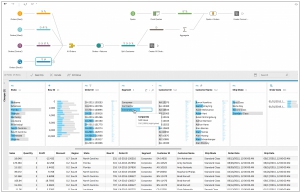
Data analytics platform Tableau has introduced a new data preparation tool. The primary objective is to provide users with a visual means to shape and cleanse their data, which is particularly crucial as businesses increasingly gather data from diverse sources. While Tableau Prep offers automation capabilities, its most significant feature is the visual interface it affords users to create such workflows. Prep supports all standard Tableau data connectors and enables users to perform calculations as well. Additionally, the company has introduced a server plan for businesses seeking on-premises or cloud-based deployment, along with a fully hosted online plan. Pricing for these options ranges from $35 to $70 per user per month.
2017. Tableau reveals Linux version
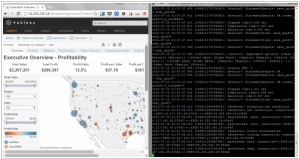
Business Intelligence software provider Tableau has recently unveiled Tableau Server on Linux, offering users an alternative option to run the software without relying on Windows Server. Additionally, Tableau has made a strategic acquisition of HyPer, a startup known for creating Hyper, a high-performance, main memory database. This acquisition aims to enhance Tableau's capabilities in terms of performance, faster loading times, and scalability. Hyper replaces Tableau's TDE database and is an integral part of Tableau 10.5, which is currently available in beta. Moreover, Tableau has taken a step further by opening its API, inviting users to seamlessly integrate and collaborate with third-party applications directly within the Tableau platform.
2017. Splunk expands machine learning capabilities across platform
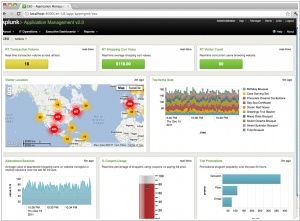
Cloud monitoring provider Splunk is bolstering its machine learning capabilities to facilitate the identification of critical data. The Splunk Machine Learning Toolkit introduces several new features specifically designed for those who prefer a do-it-yourself approach. Firstly, a new data cleaning tool has been implemented to prepare the data for modeling. Additionally, machine learning APIs have been introduced, enabling the importation of both open-source and proprietary algorithms for application within Splunk. Lastly, a machine learning management component allows for seamless integration of user permissions from Splunk into customized machine learning applications. For users seeking a more automated experience, Splunk offers new features such as Splunk ITSI 3.0. Leveraging machine learning, this tool assists in issue identification and prioritization based on the criticality of each operation to the business. These advancements empower users to derive meaningful insights from their data while tailoring the level of involvement according to their preferences.
2017. Tableau acquired natural language processing startup ClearGraph
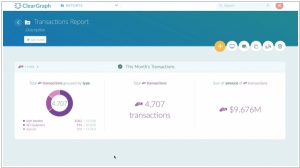
Business intelligence solution provider Tableau has acquired ClearGraph, a service that enables users to query and visualize large volumes of business data using natural language queries. Tableau intends to integrate this technology into its own products, aiming to simplify the process of data visualization for its users through similar queries. Recent advancements in natural language processing and machine learning have enabled ClearGraph and similar services to gain a deeper understanding of the underlying database, effectively translating sentences into database queries. Considering that competitors like Microsoft's Power BI already offer this capability, it comes as no surprise that Tableau is exploring this avenue as well.
2016. Tableau to launch visual data-prep software with deep learning
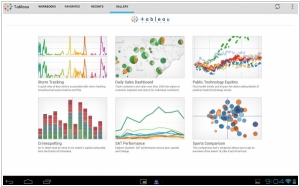
Tableau is expanding its offerings by venturing into the data-wrangling domain and has announced its plans for a visual data-preparation software known as Project Maestro. The objective is to provide users with a similar "self-service" approach to data cleaning and preparation as they have already established for data analysis. In addition, the company intends to incorporate Natural Language Processing (NLP) to enable new methods of interacting with data using human language, such as voice and text. Furthermore, Tableau Machine Algorithms will be implemented to provide recommendations for workbooks and data sources that are trusted, widely utilized, and contextually relevant to individual workflows. The software is expected to be released "later next year."



